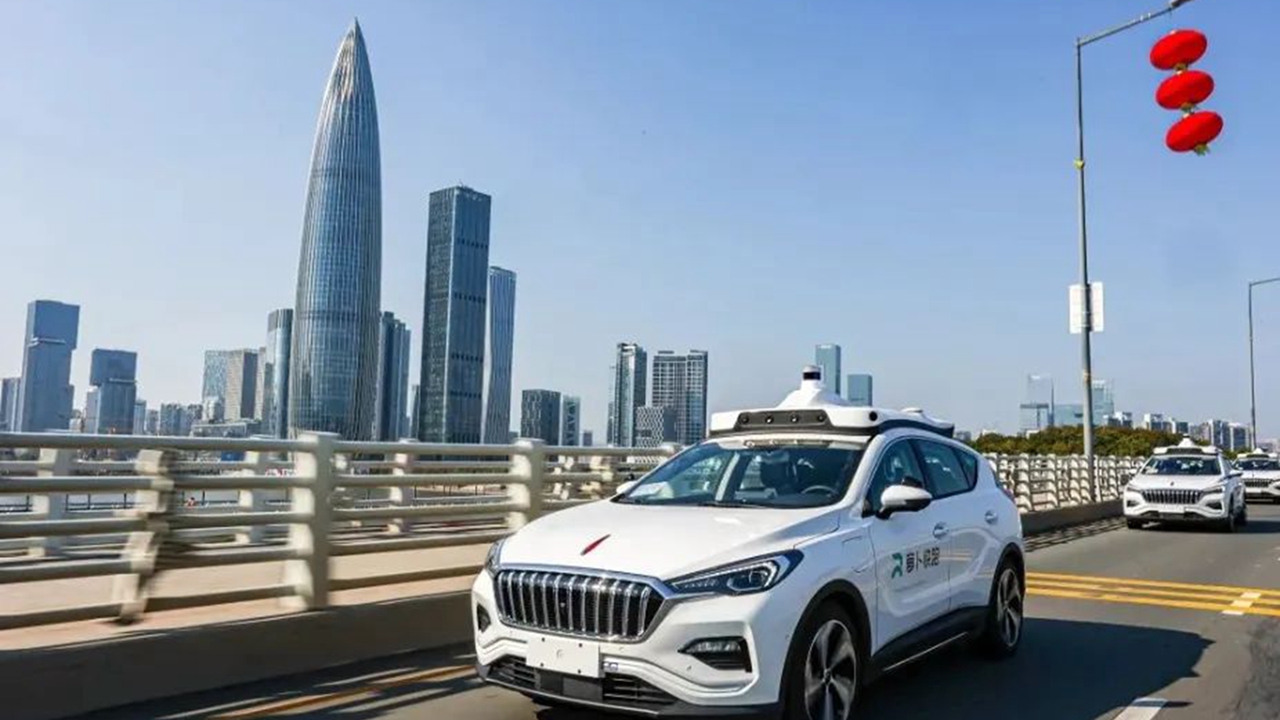SZ to be model for driverless vehicle industry
Shenzhen, as a capital of innovation, aspires to build itself into a model city with international influence for the driverless vehicle industry, after taking the country’s lead in the industry for years.
In 2021, Shenzhen’s driverless vehicle industry raked in 106.6 billion yuan (US$15.3 billion) in revenue and over 1,200 local enterprises are engaged in the sector, according to a three-year (2022-25) action plan to foster this industry’s clusters unveiled by the city’s development and reform commission, and science and transport authorities recently. The industry is expected to generate a 200-billion-yuan revenue by 2025.

Autonomous taxis test run in Nanshan District. File photo
The city will put emphasis on the vehicles’ intelligent perception system, in-car computing system, wireless communication system, cloud service terminals, power cells, electric motor control system and instant electricity charging facilities, as per the plan.
Shenzhen’s regulation on the management of driverless vehicles, said to be the first of the type in China, took effect Aug. 1, allowing fully autonomous vehicles without standby drivers on roads for tests and encouraging driverless vehicle business operators to verify driverless technologies through a simulation platform. The city became the first in China to allow “truly unmanned” self-driving cars on the road.
On Aug. 1, Deeproute.ai put its robotaxi fleet, equipped with Level 4-Driver 2.0 technologies, on a road test in Futian District. Zhou Guang, CEO of Deeproute.ai, said the regulation broke barriers for intelligent connected vehicles in terms of road testing, registration, management and traffic accident handling.
On Aug. 24, the city opened 53 road sections totaling 57 kilometers in Nanshan and Futian districts and Dapeng New Area for driverless vehicle testing, bringing the total length of roads for such testing to 201 kilometers.
The world’s first port for large-scale application of 5G+ autonomous driving technologies has also been launched in Shenzhen. In Nanshan, Futian and Pingshan districts, as well as other significant areas, robotaxis, autonomous minibuses, and low-speed autonomous vehicles have also been tested.
According to the city’s transportation bureau, Shenzhen will open a whole region for autonomous vehicle testing in the second half of this year or next year by choosing an administrative district.
Meanwhile, Shenzhen has the most complete closed-loop industrial chain of new energy vehicles (NEV), boasting many enterprises engaging in NEV spare parts and core materials, according to Liu Hua, secretary general of Shenzhen New Energy Vehicle Industry Association.
Lidar is key to driverless vehicles. RoboSense, a Shenzhen-based world-leading provider of smart lidar sensor systems, expanded its production capacity this year, which saw orders in the first half of this year increase over 10-fold year on year. The company boasts 10% of the market share worldwide, ranking first in China and second globally, according to the “Lidar for Automotive and Industrial Applications Report 2021” from Yole Développement, an international market research and strategic consultancy.
Shenzhen has gathered a group of leading enterprises such as Huawei, BYD and Deeproute.ai, covering automatic driving, chips, digital cockpit, various sensors and other fields.
In Shenshan Special Cooperation Zone, Phase I and II of BYD Industrial Park will add an annual output value of 110 billion yuan to the cooperation zone, which will lay a solid foundation for Shenzhen to achieve its goal of becoming a world leading city for the driverless vehicle industry.
China has about 4,000 companies connected to the autonomous driving sector, about 20% of which are based in Shenzhen, according to Chinese corporate registration statistics on Tianyancha, a corporate registry data provider.